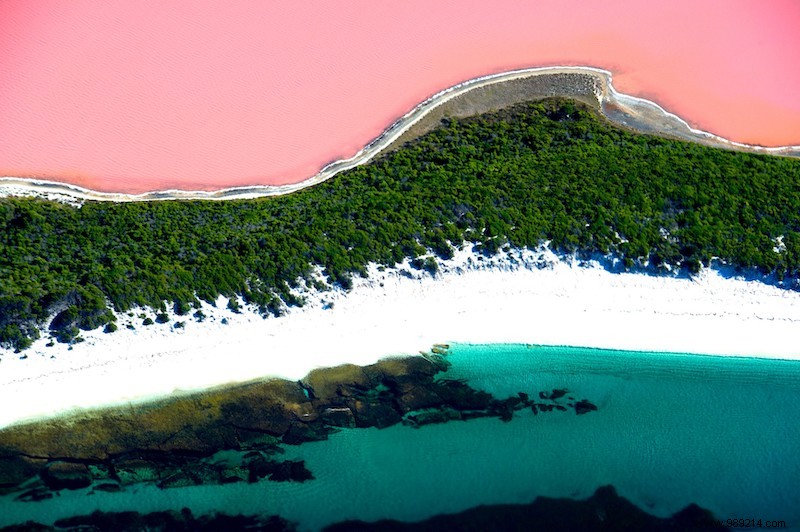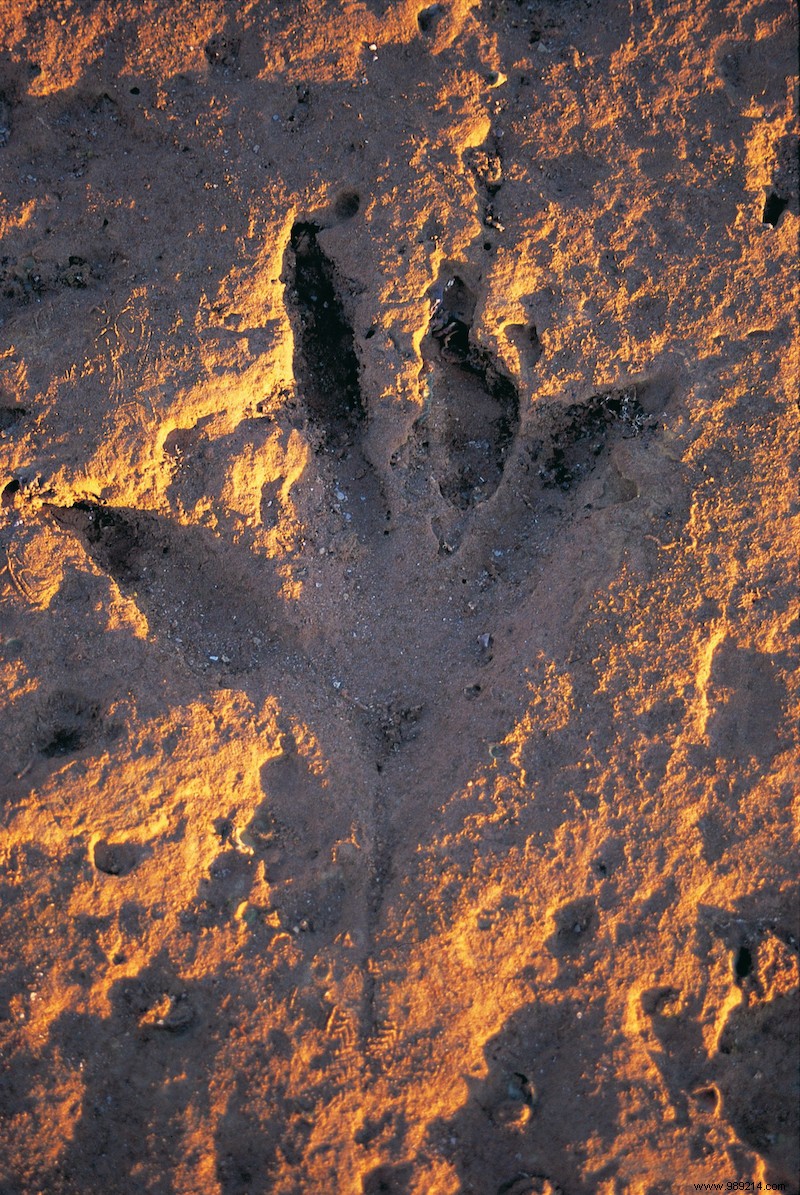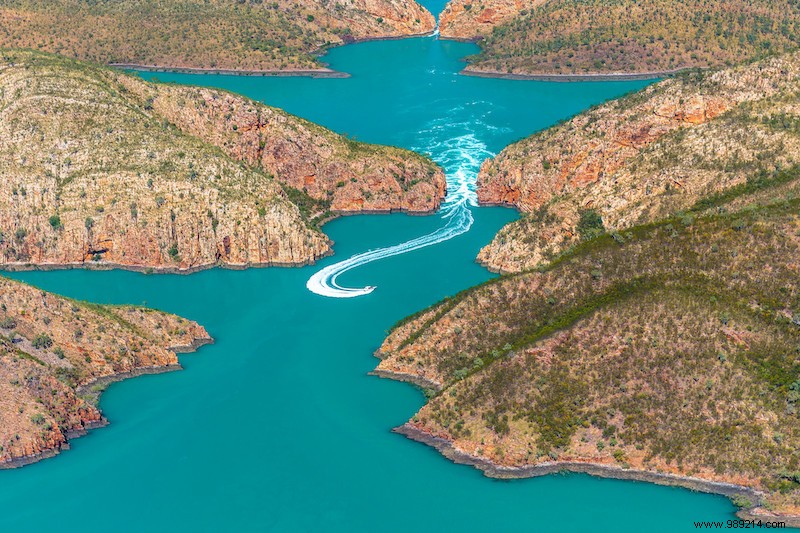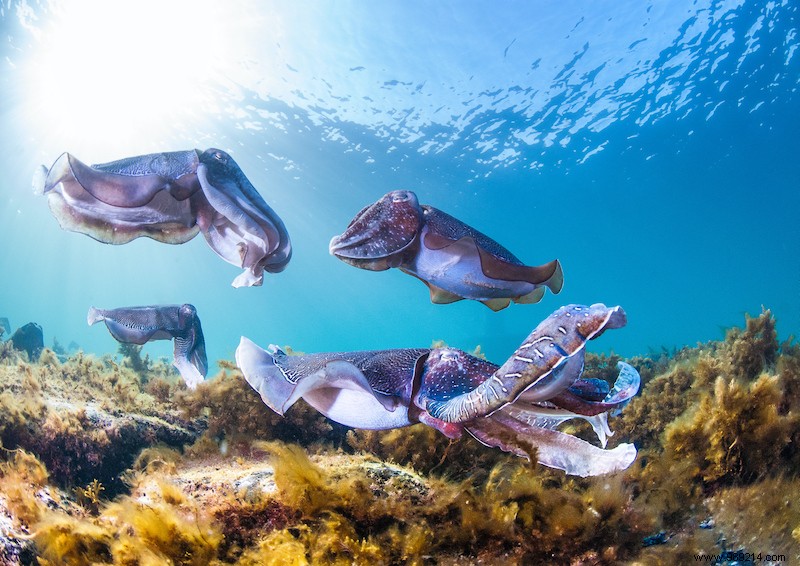Lakes made from cotton candy, on the trail of the primeval lizards, waterfalls from the ocean and the most spectacular event in Australia's underwater world – these natural phenomena can all be seen Down Under. Australia is home to some of the most unique landscapes and natural wonders in the world. Nowhere in nature is there such a wide color gamut. And best of all, these phenomena are so striking that even any amateur can capture great photo motifs. From surreal to uniquely beautiful, these four natural phenomena from Western to South Australia provide great photo opportunities and should be on any Australia bucket list.
Bathing fun like in cotton candy:the pink lakes, Lake Hillier on Middle Island in Esperance

Australia is known for pearly white sand beaches, crystal clear waters and breathtaking coral reefs. But pink lakes? You have to see these extraordinary waters with your own eyes to believe them. These colorful lakes can be found between the South Australian outback and the Western Australian coast. The special thing about Lake Hillier:it is constantly pink. Even if the water is extracted, the color does not change. This lake borders directly on the dark blue waters of the Indian Ocean, with a strip of lush green forest as a barrier. Where does this unusual color of water come from? Scientists suspect that various bacteria and salt-tolerant algae in the lake are the culprits. The composition of the nutrient concentration can also play a role. However, the phenomenon has not yet been clearly clarified.
On the trail of the primeval lizards:giant dinosaur tracks in Broome, Western Australia

Dinosaur – the word doesn't just make children's hearts beat faster. The world's largest footprints of these primordial lizards are on the north coast of Broome in Western Australia. At just under two meters long, these fossilized dinosaur footprints date back 130 million years and stretch for 50 miles (80 km) in pieces along the coast. At the southern end of Cable Beach is Gantheaume Point, a scenic area of red sandstone cliffs, where visitors can best photograph dinosaur footprints on the flat rocks 30 meters out to sea – but these are only visible at low tide.
Hint: If you're in the region between May and October around the time of the full moon and the tides are extremely low, you can marvel at a different phenomenon after visiting Australia's very own Jurassic Park. Staircase to the Moon – When the sea recedes to create a vast tidal flat landscape, the moon's rays are reflected both in the sea and on the tidal flats, as if a stairway to the moon is accumulating in the dark.
Waterfalls in the middle of the ocean:Horizontal waterfalls in Talbot Bay in Western Australia

.
Horizontal waterfalls in the middle of the ocean - only found in Australia. One of the most extraordinary natural attractions in the Kimberley region that can be seen all year round. There, strong currents push through two narrow gorges, creating waterfalls that flow practically horizontally. These are two tide dependent compensating currents. The only way to reach this water spectacle in the far north of Talbot Bay is by boat or plane. The first and largest waterfall is about 20 meters wide, the second about 10 meters wide.
Giants from the Deep Sea:The Giant Squid Amalgamation, Eyre Peninsula, South Australia

Giant squids are native to the deep seas of the world and are believed to be the origin of many sailor legends about mysterious creatures from the sea. Most often, these giants live at a depth of more than 500 meters off the coast of Australia. For annual reproduction, one of the most spectacular natural phenomena in the Australian marine environment, the “Sepia apama” migrates to the waters of the upper Spencer Gulf of South Australia. Thousands of octopuses gather there every winter. It is the only place in the world where the squid accumulates annually in large numbers and with such predictability. As skilled color changers, the masters of camouflage can change their shape and texture to look like rocks, sand or seaweed. Travelers can use it between June and July.
Snorkel the amazing Giant Squid at Stony Point, located on the shoreline of the Upper Spencer Gulf Marine Park on the Eyre Peninsula.